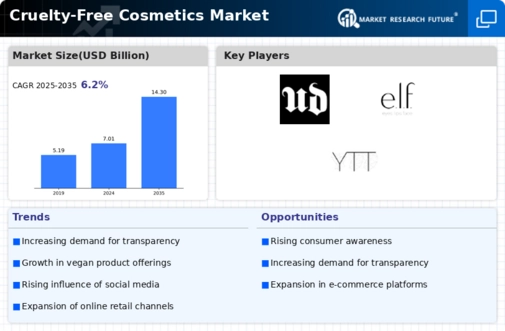Cruelty-Free Cosmetics Market Summary
As per Market Research Future Analysis, the Cruelty-Free Cosmetics Market is projected to reach USD 14.30 Billion by 2035, with a healthy CAGR of 6.2% during the evaluation period. The market is driven by increasing consumer demand for non-comedogenic and organic products, alongside a growing awareness of animal welfare and the negative impacts of animal testing. The COVID-19 pandemic initially hindered market growth due to supply chain disruptions, but post-pandemic recovery efforts are focusing on research and development to meet evolving consumer needs. The market is segmented into skincare, haircare, makeup, and fragrances, with makeup expected to dominate market share. North America is anticipated to lead regional growth, particularly in the US, Canada, and Mexico.
Key Market Trends & Highlights
The Cruelty-Free Cosmetics Market is witnessing significant growth driven by consumer preferences and market dynamics.
- Market Size: USD 13.46 Billion by 2034; CAGR: 6.2%
- Makeup & Color Cosmetics expected to hold the highest market share.
- North America projected to account for significant growth during the evaluation period.
- Post-pandemic focus on R&D to align with consumer demands.
Market Size & Forecast
| 2024 Market Size | USD 7.37 Billion |
| 2035 Market Size | USD 14.30 Billion |
| CAGR | 6.21% |
| Market Size | USD 13.46 Billion by 2034 |
| Largest Regional Market | North America |
Major Players
Urban Decay (L'Oréal S.A.), PHB Ethical Beauty Ltd, Kosé Corporation, Plum Goodness, e.l.f. Cosmetics, Natura (Brasil), INIKA Organic, Avalon Natural Products, Kendo Holdings, Yes To.














Leave a Comment